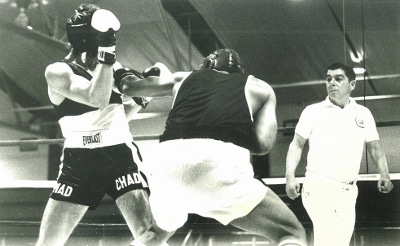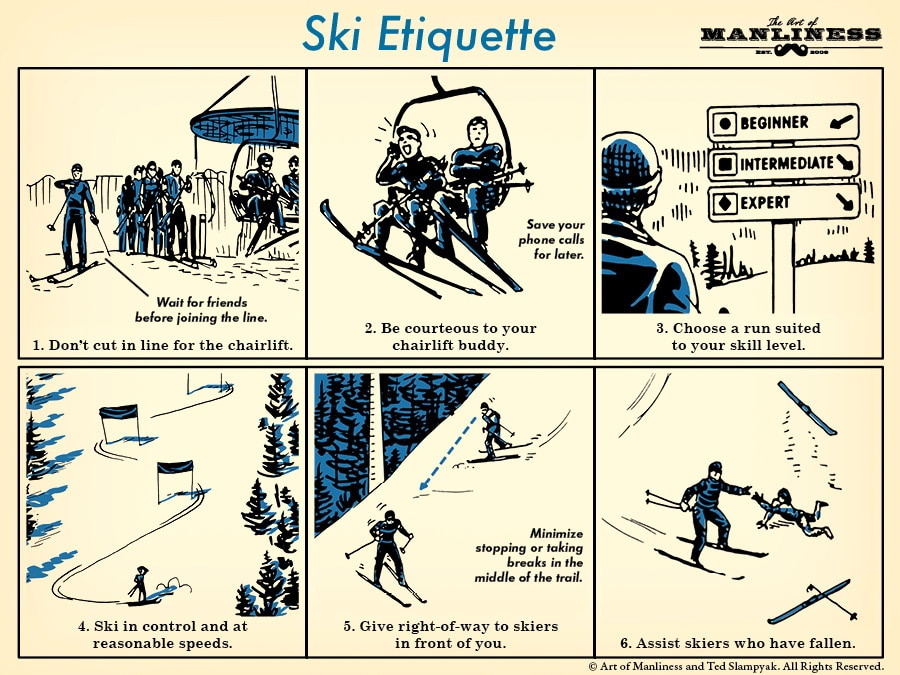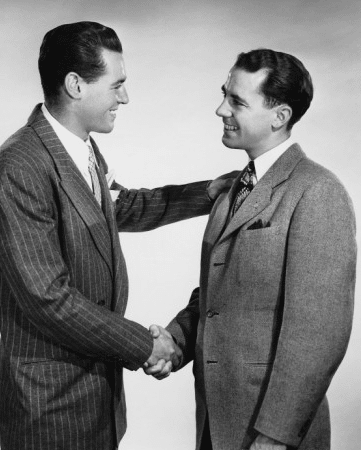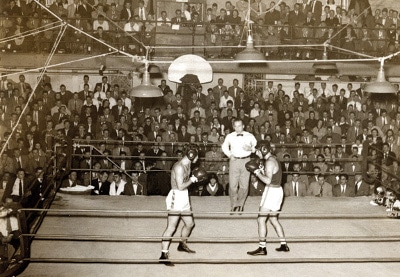
Editor’s note: This is a guest post from Martin Schatz.
In our first article, we looked into the what’s and how’s of finding a respectable boxing gym. In our second, we covered the best ways to earn respect and ingratiate yourself into the gym environment. In this final installment, we will describe how to put your plan into practice and compete in a boxing match.
Getting Your Amateur License
Amateur boxing in the United States is managed by USA Boxing, which is responsible for the sport all the way up through the elite ranks of our national Olympic team. Events arranged outside of this organization are considered exhibitions or interclub “smokers.” To participate in USA Boxing events, you will have to go through a physical examination, proving that you are of sound mind and body and pay your annual dues to the nearest Local Boxing Committee (LBC). You can find the relevant contact info for your district here.
First things first: make an appointment to get your physical. It is suggested that you talk to your coach or the managers of your gym first, as they can often recommend a partnering physician in the area. Sometimes they will have negotiated discounted rates in exchange for sending lots of athletes their way. When this is the case, the physician will usually have the official form at the office for you. If not, you will need to get a copy from your gym or LBC.
The physical is very basic. They will check your blood pressure, reflexes, and heart rate. They will ask you about past concussions and hand injuries. They do not do any kind of X-rays, brain scans, or other advanced screening types of procedures. Assuming that you are given a clean bill of health, you will mail or deliver the Amateur Boxing application, your signed form of the physical, two passport-sized pictures, and a check for $55.00 to the LBC. Within a week or two, you will receive your license. Do not lose this, as you will need to surrender it at every USA Boxing event, only to be returned to you after the results of your bout have been entered.
Getting Added to an Amateur Boxing Card
Fortunately for you, this is easy. The amateur boxing circuit is a small world, both locally and nationally, and once your coach decides that you are ready, he will be your best resource for attending and competing in events. There are two basic types: the tournament and the local club fight. Tournaments are more well-known, as just about everyone has heard of the Golden Gloves, Ringside’s National Championships, and others. The second option is when a local club, business, or charity event sponsors a fight card.
Tournaments, as one might expect, span several days, with the winner moving on in the bracket, while the loser gets to watch the rest of the event from the sidelines. Depending on the event and your weight class, you may need to win several fights to get to the championship, or one, or none. For smaller tournaments, and if you are in a very light or very heavy weight class, you may get moved straight into the finals to face the one other fighter in your division. I have a friend who was awarded the regional Golden Gloves Championship without having to fight a single bout. She was the only fighter in her weight class to register.
Club fights are all over the board in terms of the size of an audience, venue, and location. I’ve had several fights at local gyms, and I made my amateur debut at the Elks Club of San Francisco, a swanky club for the movers and shakers of the local business community. Unlike the local gym fights, the Elks Club blessed us with ring card girls. One notable difference on club fights is that you don’t have to fall within a specific weight class. Matches are typically made between the two fighters who are closest in weight and experience. Therefore, while a novice fighter (10 or less fights) has to make his weight class for a tournament at, say the 152 pound division or be forced to move up to 165, a club fight will allow a 154 pound fighter to match up against someone at 150, or 158 in the other direction. These are ballpark figures, but the point is that a tournament is a bit more rigid in terms of match-making.
Getting Matched, and Dealing with It
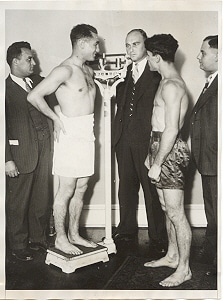 You have trained hard, taken your licks, and now you’re giving out more beatings at the gym than taking. Your coach has agreed that you’re ready to mix it up, and you and your team have shown up at the event ready for war. Now what?
You have trained hard, taken your licks, and now you’re giving out more beatings at the gym than taking. Your coach has agreed that you’re ready to mix it up, and you and your team have shown up at the event ready for war. Now what?
First things first, you will weigh in and see the doctor. You will hand over your amateur card, and step on the scale. After a light dinner the night before, and no breakfast, your weight is marked down, and you are looked over by the doctor. He has you track his pen-light with your eyes and checks your heart rate and blood pressure, which is most likely dangerously high due to the stress and uncertainty of the situation. He will make a joke or two about you being nervous and then wish you good luck. After everyone goes through this, they will work over the fighters and their bios and match opponents up as best they can. Novice fighters have to fight other novice fighters, and open class fighters, with 10 or more fights, get matched up with other open fighters. Eventually, they come up with the schedule, as well as notifying a few unlucky (lucky) guys that they weren’t able to find a suitable match for them. At this point, your fate is sealed.
*A quick head’s up about the above process. Nothing ever goes on time. I have never been to a show where the weigh-in started when it was supposed to. I have never been to a show where the doctor was on time. I have never been to a show where the first fight started at the time it was planned. Be prepared for this, as the waiting for everything is the hardest part of the day. Bring your iPod.
The schedule tells you what corner you will be in (red or blue) and what number on the schedule you will be fighting. I always pray to not be first, but not to be too far down the list either. As I mentioned, nothing is worse than the long wait. Another small joy of amateur boxing is the close proximity to your opponent. From the moment you get there, everyone is eye-balling each other, mentally sizing the guys up, especially anyone who looks around their weight. Once the matchups are announced, you know which guy you will be fighting. You will most likely be getting dressed and warmed up in the same room as him. I had a fight last year where the room was so cramped that we were literally shadow boxing right next to each other as our bout neared. This is stressful.
For me personally, even if my bout is near the end of the card, I like to get my hands wrapped right away. Now the most time-consuming part of the process is done, and I can get dressed and warmed up in the 15-20 minutes before I expect to enter the ring. While you will need to bring your own headgear, cup, and mouthpiece, the event will supply the gloves. Typically, they will let you pick up your gloves from the scorers’ table when you are on-deck, or one fight removed from your own.
When the fight before you ends, you will wait until both opponents have left the ring, and then you will make your way to the battlefield. You will enter the ring from the corner that you have been assigned. Your coach will give you last minute instructions and smear some Vaseline on your face and headgear. When the announcer says your name, move to the center of the ring where the referee and your opponent are waiting for you. The ref will say whatever he feels he has to say; you will touch gloves with your opponent and get motioned back to your corner.
In the last few seconds before the opening bell rings, your panic and fear will be replaced by a deep and serious focus…and fear. Your opponent will look impossibly muscular and formidable, but you will look the same to him. Now, you will either be rewarded for all of the sacrifices, pain, and hard work that you put in, or you will be rebuked sharply for all the days that you stayed in your warm bed instead of doing your roadwork, and all of the times that you dogged it on the heavy bag when your coach wasn’t looking. Either way, stepping in the ring is a step that the vast majority of the population is unwilling and unable to do, and you will never regret having done it. Best of luck to you.
DING!
Amateur Boxing for Beginners: A How To Guide Part 1, Part 2, Part 3



